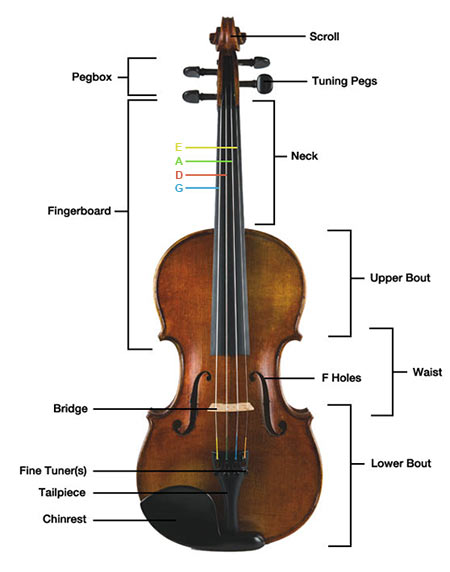Looking back at the week before, I noticed that there was not much "in-depth" violin language that I researched, so I took a section of week two to do so. The two websites I used were violinist.com and violinonline. Using these two websites, I divided violin vocabulary words into three sections: parts of the violin, parts of the bow, and accessories/necessities for the violin.
2. Parts of the Bow
3. Accessories/Necessities for the Violin
Bridge: The ornate, raised wood that hold up the strings in the middle of the violin. It is not glued down; it stays in place only because of the pressure of the strings.
Shoulder rest: A contraption with a cushioned bottom and plastic support that is placed on one's shoulder to help support the violin.
Mute: A small device that fits over the bridge to mute the sound of the violin.
Chin rest: A wooden device attached to the bottom-front of the violin that separates the chin from direct contact with the violin surface.
Once I knew for sure that my research was complete, I began to actually learn how to play the violin by starting some pieces! I used the same Suzuki book that was used in order to obtain the "research" I did last week. The results were...um...interesting.
I'm not sure if I can express in words as to how disgustingly squeaky I sounded the first time I attempted to play a note on the violin. I thought that now knowing the correct posture, bow hold and fingerings, the actual playing of the violin would be easy to do. Uh...let's just say that I was wrong. Wrong to the point that there were times during my first few days of violin practice where I questioned as to why I decided to choose this topic for my project. I thought that most of you would not be able to understand how bad I was at first, so here is me playing one of the first of the Suzuki Book 1 songs, "Lightly Row."
Not the best thing you ever heard, was it?
Listening to the recording taken of my violin playing, I came to the realization that I needed a lot of practice. So, unlike my original plan of slowly increasing five minutes a day, I went straight to practicing two hours daily. Through this, I was able to progress significantly quicker and was able to (kinda) get the squeaks away. This was the result of continuous practice for seven days:
It's clearly not the best playing that you will ever hear, but I think that I got right where I wanted to by the end of this week. I hope that I will have the same motivation on week three as I had on week two and will be able to continue progressing at the rate I currently am! Wish me luck! (Really though, I need it.)




